It was quite a stirrup in the boating industry, much more naturally within the Beneteau community, when a handful of years ago during a dealer meeting Gianguido Girotti announced: “First is back!”. A n intoxicating teaser-trailer later, cheering dealers from all over the world sprung from their seats, yelling and applauding, standing ovations for minutes. Literally, I do not exaggerate. And boy it was time to re-vive the legacy of Beneteau´s long neglected performance-line. For buffs, here´s a feat: Did you know that the First-line was there long before the first Oceanis sailed? Well, this is all history, along with the story of Gianguido Girotti´s beer mat onto which – as the legend goes – he had scribbled his ideas about the new first.
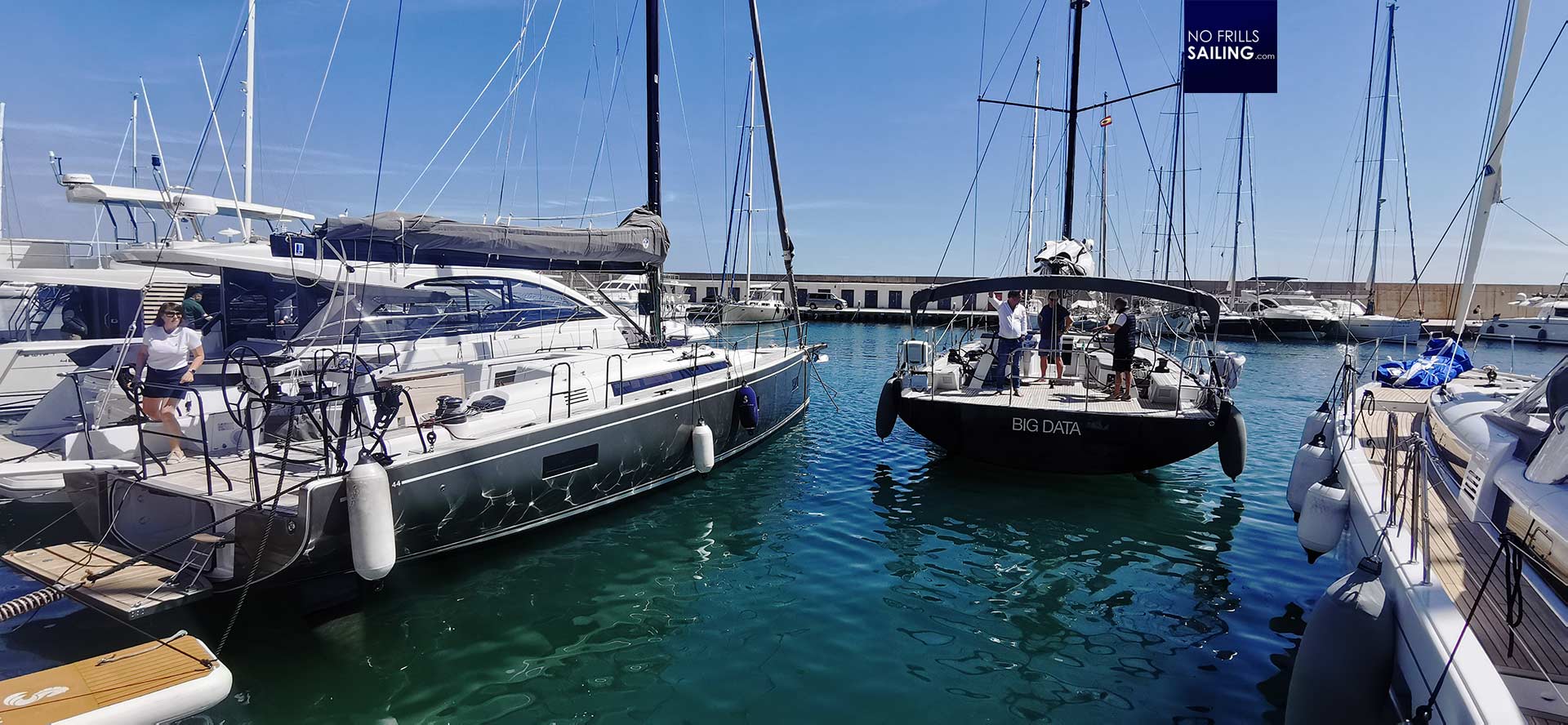
Well, here we are, some years later and the new boats have already arrived: The queen herself, the majesty, the wonderful First 53, the new smaller sub 30-feet Firsts, re-labelled Seascapes, the breathtaking First 36 that is already sold out until late 2024, early 2025. And of course, the new First 44. A boat that was much anticipated as 40-44 feet is the size for performance-oriented “Gentlemen racing”-optimized yachts.
44-footer in a highly competitive market
The new First 44 follows the design principles of Argento and Biscontini. A timeless approach since it has always been a core value of First-yachts to be considered contemporary and beautiful even after many, many years. Just look at the First 36.7 or First 40.7 which even now are reasonably nice to look at boats. I know that many people expressed some disappointment with the design of these new boats, but I must say, after the first years seeing them and working with them, I agree: They are just timeless and beautiful boats.
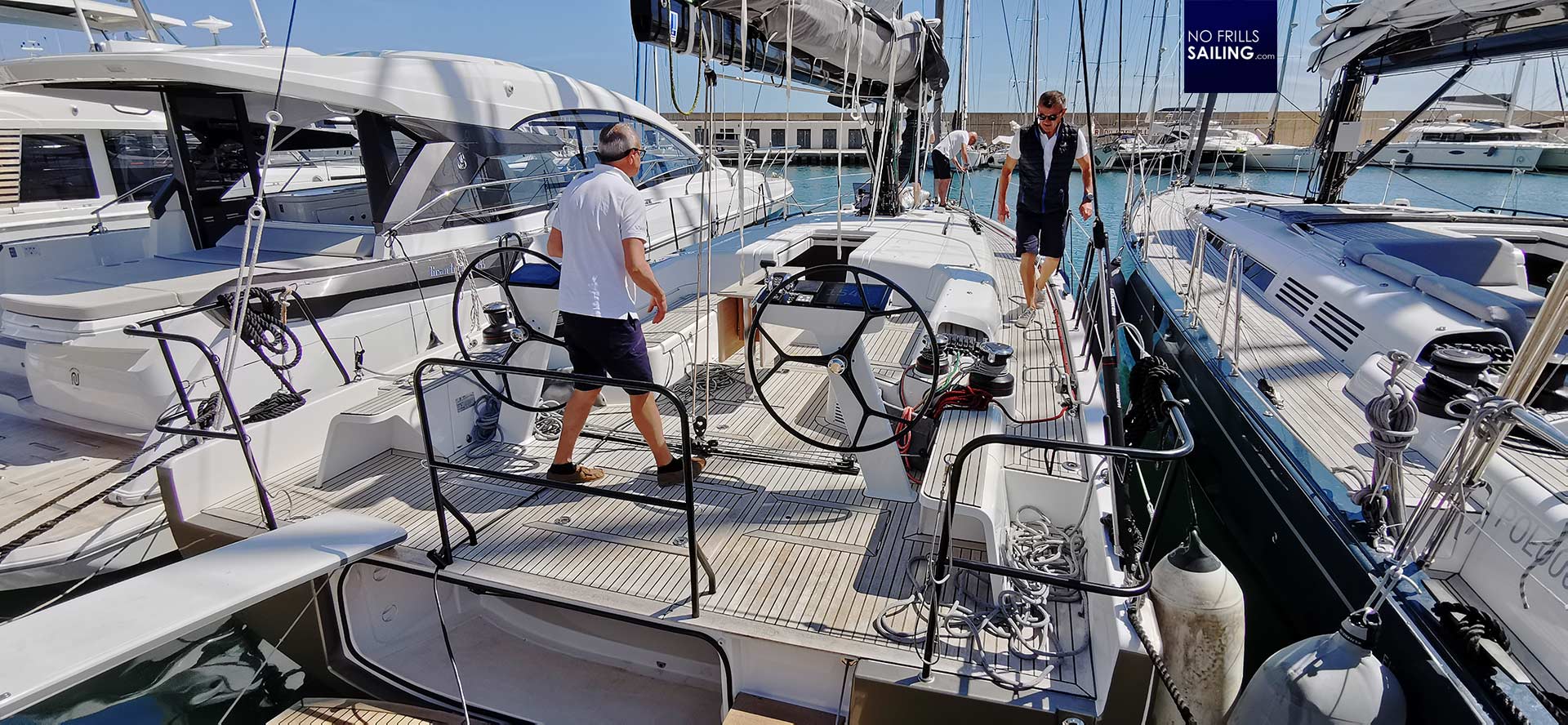
During my week at Beneteau Sea Trial Base in Port Ginesta near Barcelona I used the chance to board the First 44 for a sea trial. In fact the slot had been booked by a Finnish yachting journalist, Nuuti Paasinen and the yard agreed to take me with him as I functioned as something similar to a journalist as well. I already know the First 44 very well from my first encounter with her in Les Sables a year ago when I did the interior and exterior walkthrough and also from the First 44e testbed, which I extensively had a look at during Paris boat show last Christmas. But now it was for sailing.
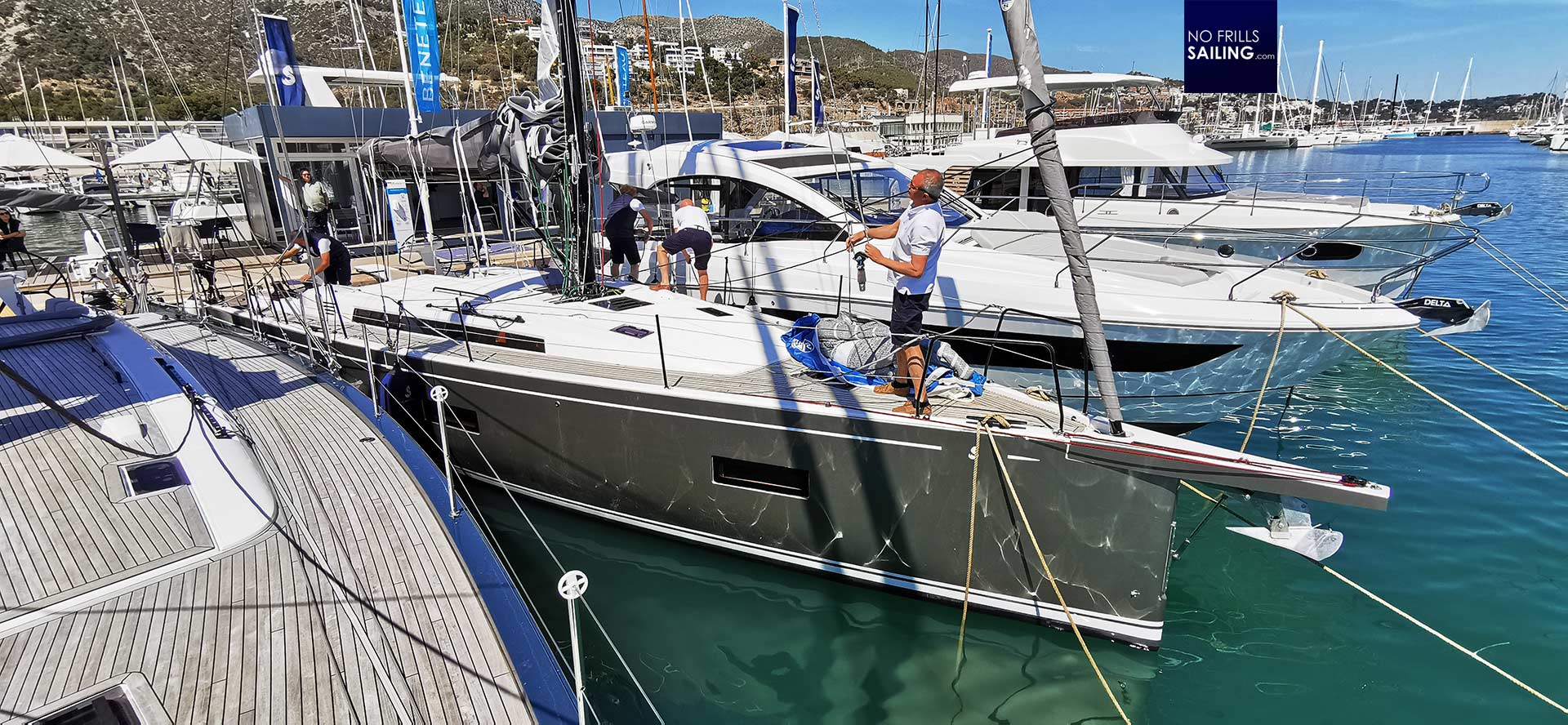
As the skippers of Beneteau premium service readied the boat, I talked to Paasi. There is quite some competition on the performance market: Especially Italia Yachts with their 12.98 and recently launched Grand Soleil 44 are tight together. Both boats had been designed by IRC “Wunderkind” Matteo Polli and both brands offer light performance and cruising versions of the boats. Not to mention the J/45 or the “classics”, like Pogo 44. Well, as I said, an interesting market. The First 44 I was about to board was the cruising version, a bit heavier than her fellow competitors but still a hotshot, as I was about to experience myself soon.
All boats sail good in strong winds …
Well, at least that was what I was hoping for. Looking at the pictures you, dearest reader, might have guessed it by yourself now: The weather was perfect for an Aperol Spritz in the cockpit as there was virtually no wind. Less than 6 knots in the marina and not a single frizzling on the water-surface. Our skipper, my fellow colleague Yves, right away fitted the Code 0 lightwind sail.
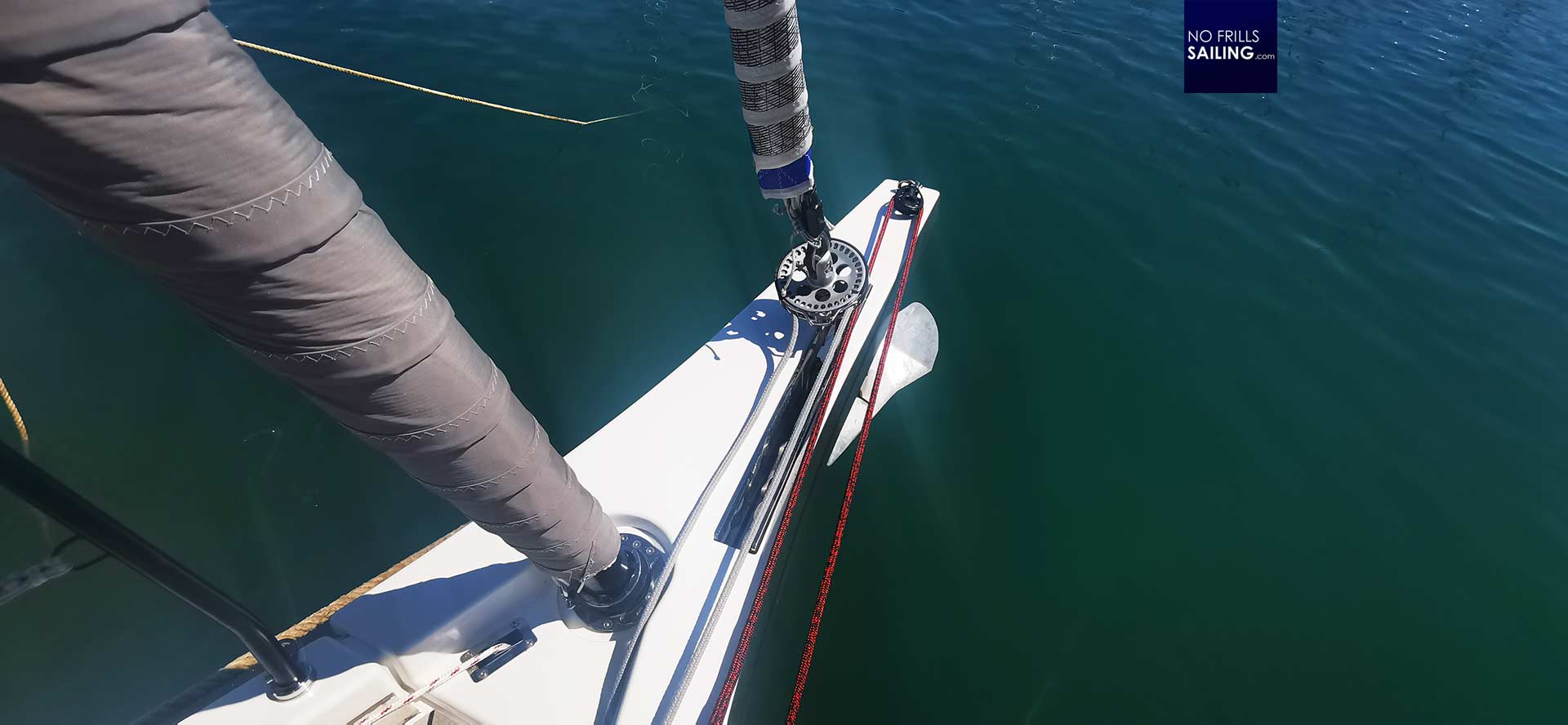
We dropped the moorings and went out, the mainsail was hoisted quite quickly thanks to the electric winch. I deferred Paasi to steer the first part of our trip. He held the boat into the wind and watched Yves getting up the cloth. Although wind was just above 8-9 knots TWS outside and we´ve had just the mainsail up, we killed the engine and the boat sailed along gently. A good sign.
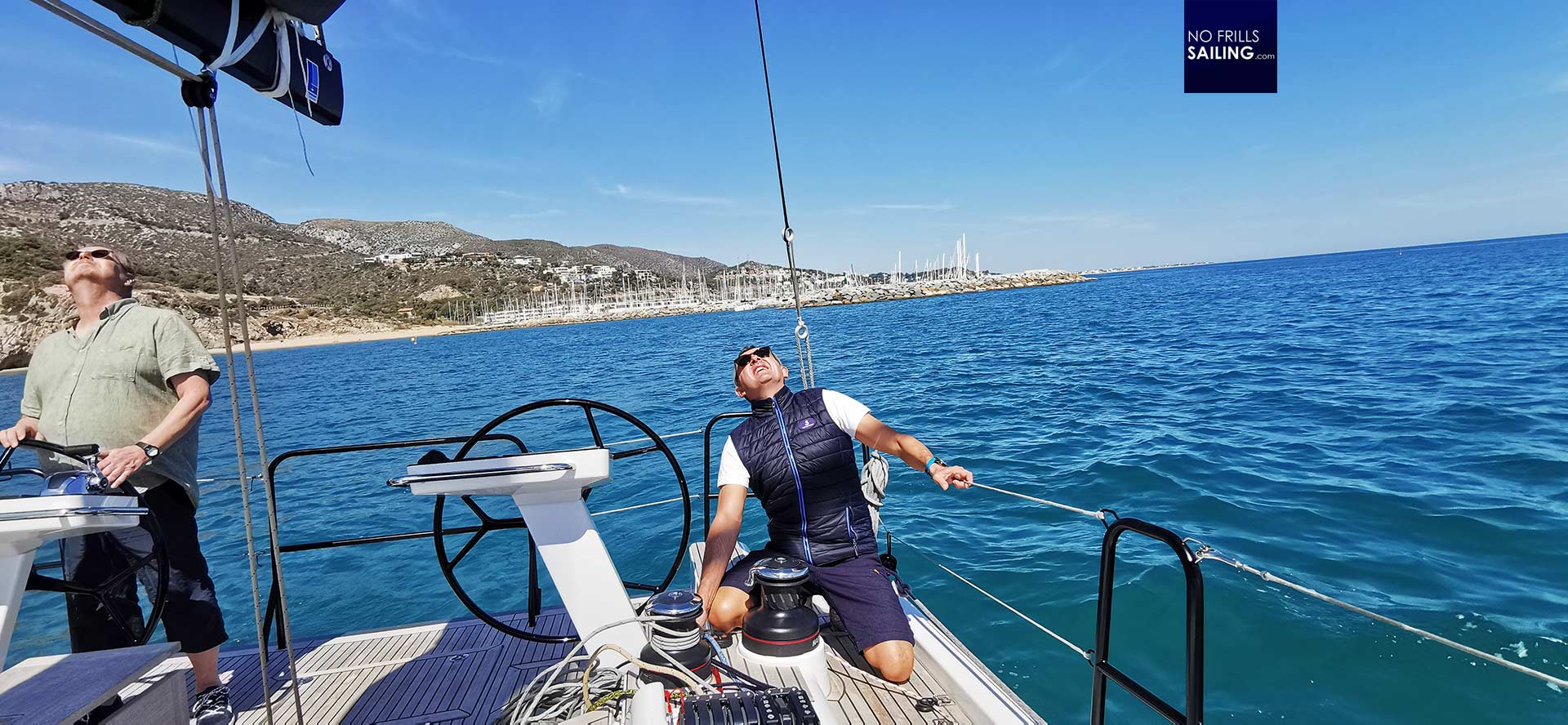
There is a saying that all boats sail reasonably good if wind is up and strong, but a good boat shows its true capabilities when there is low or no wind. In this, although the excitement factor of this sea trial was certainly not about to go through the roof this day, I was very keen on how this 10.5 tons displacing boat would behave in these very light conditions.
Layout and running rigging of the First 44
I´ve mentioned it before, the First 44 can be ordered in “cruising” or “performance”-version. For the cruising version all lines are brought back to the four main winches which are placed just before the steering wheels at either side. For the performance-version, this is changed to a crew-optimized winch position with Genoa winches aft, two working winches on the cockpit coamings and two more winches next to the entryway down.
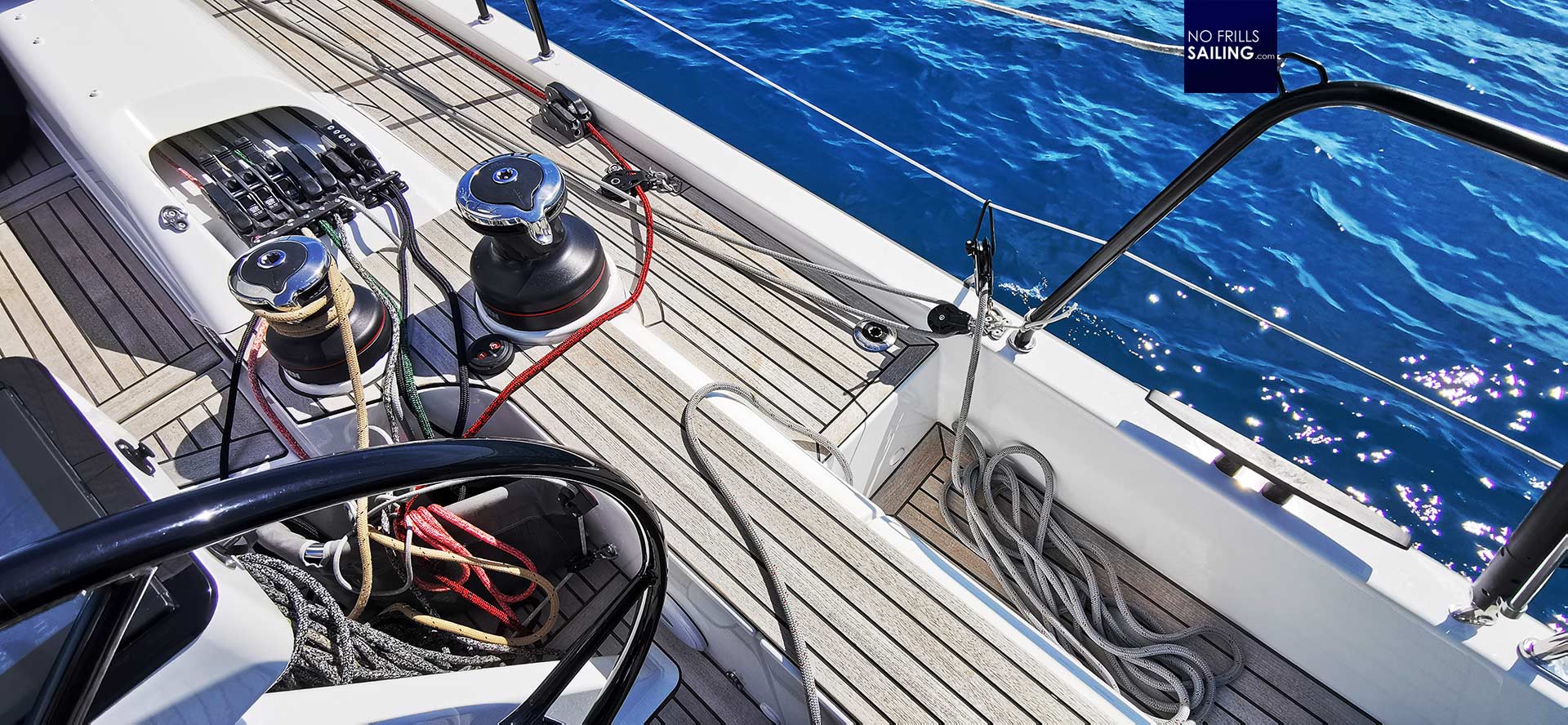
The cruising layout of the boat is exactly the one I am very familiar with already from the Oceanis 46.1 and 51.1 which allow for a complete single handed management of all lines from abaft. Paasi, my Finnish friend with a very nice and special sense of humor, found it a bit hard to accommodate to this layout as he tried to place himself comfortably working the winches. It must be noted that the cruising First 44 isn´t really thought to compete in races, if you seek the thrills of a regatta, you should opt the lighter and much more ergonomic performance version.
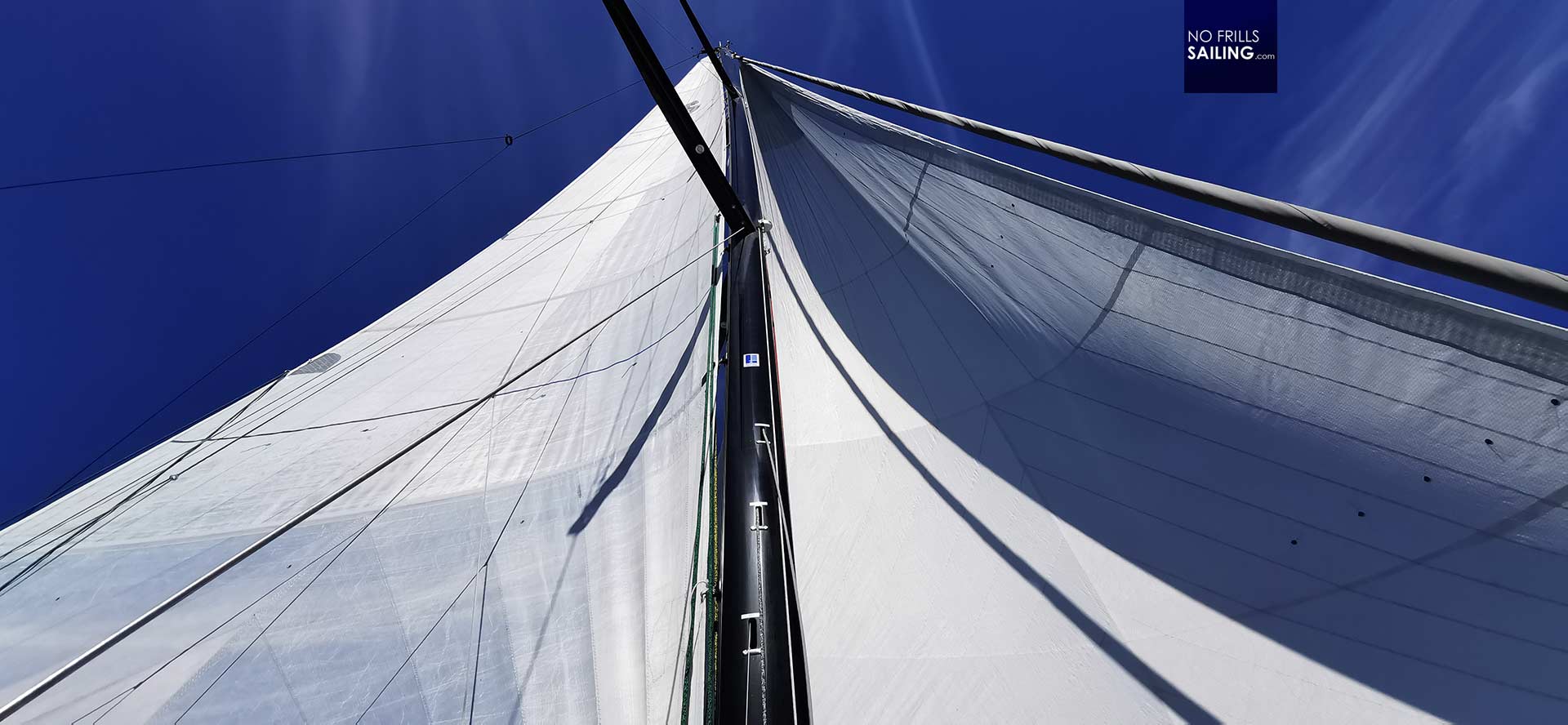
Finally the Code 0 unfurled and although – I can´t stress this enough – there wasn´t really any wind, I felt an immediate acceleration as the boat sprung to life. Paasi put the boat to an upwind/broad reaching point of sail and we gained a bit of distance to the marina. She sailed along rather nicely: Although we went sharp upwind and there were indeed small waves, I didn´t notice any slamming or smashing of the waves which indeed is a sign for a nicely designed entry and a compliment to the hull itself.
We are sailing!
The sailing performance in these light wind conditions was indeed quite impressive, at least for me: When I took over the helm and sheeted in the sails as much as I could (thanks to the nice traveler) I was able to get her to point as high as just under 30 degrees and we still sailed! Before the Code started to kill, I beared away with a quick notice to the rudders.
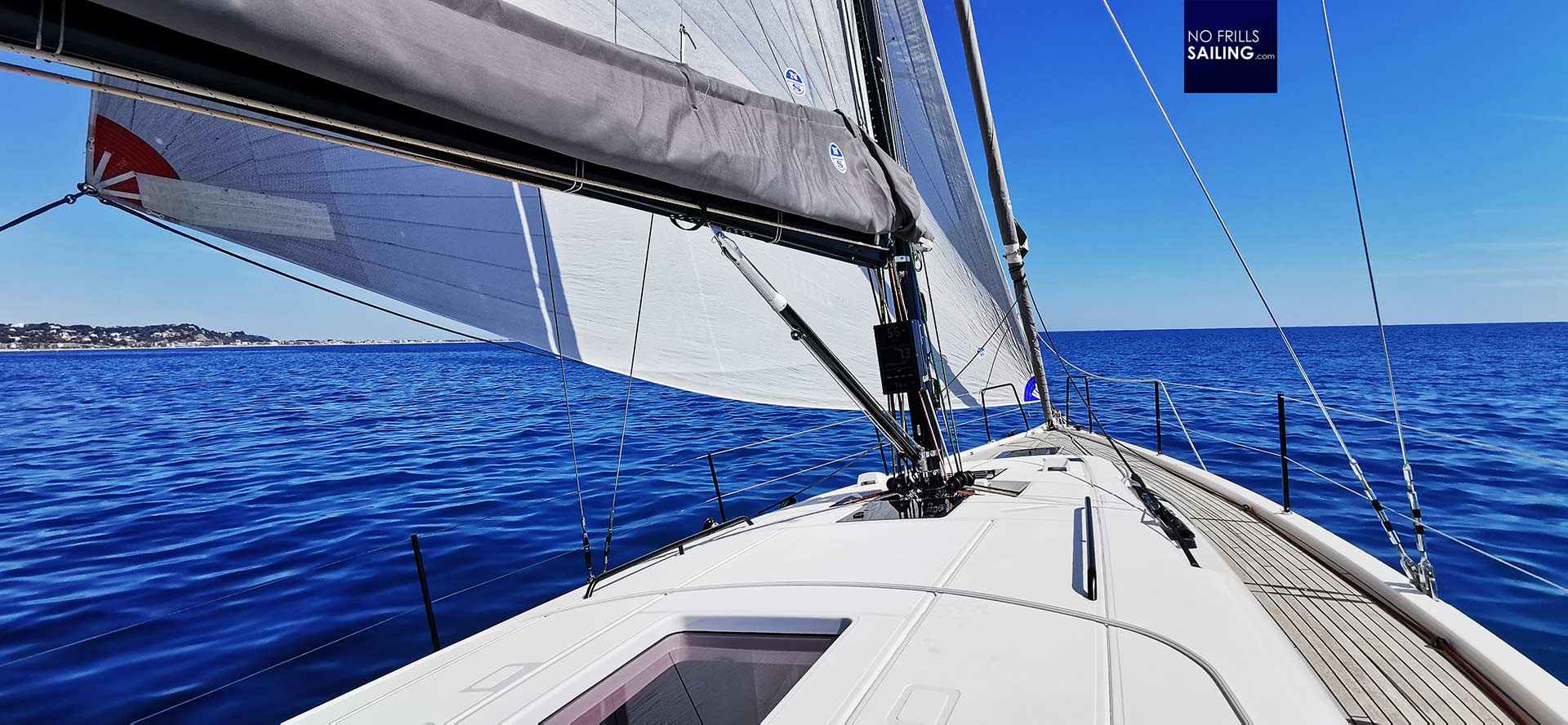
Looking at the naked numbers on the chart plotter, I was astonished: At 30 to 40 degrees AWA and winds of 6.5 to 9 knots the boat harvested always way more than 70 percent of the wind speed and turned it into boatspeed. The Code 0 is a very efficient sail and why every sailor should have light wind sails such as a Code 0 and a Gennaker aboard has again been confirmed impressively.
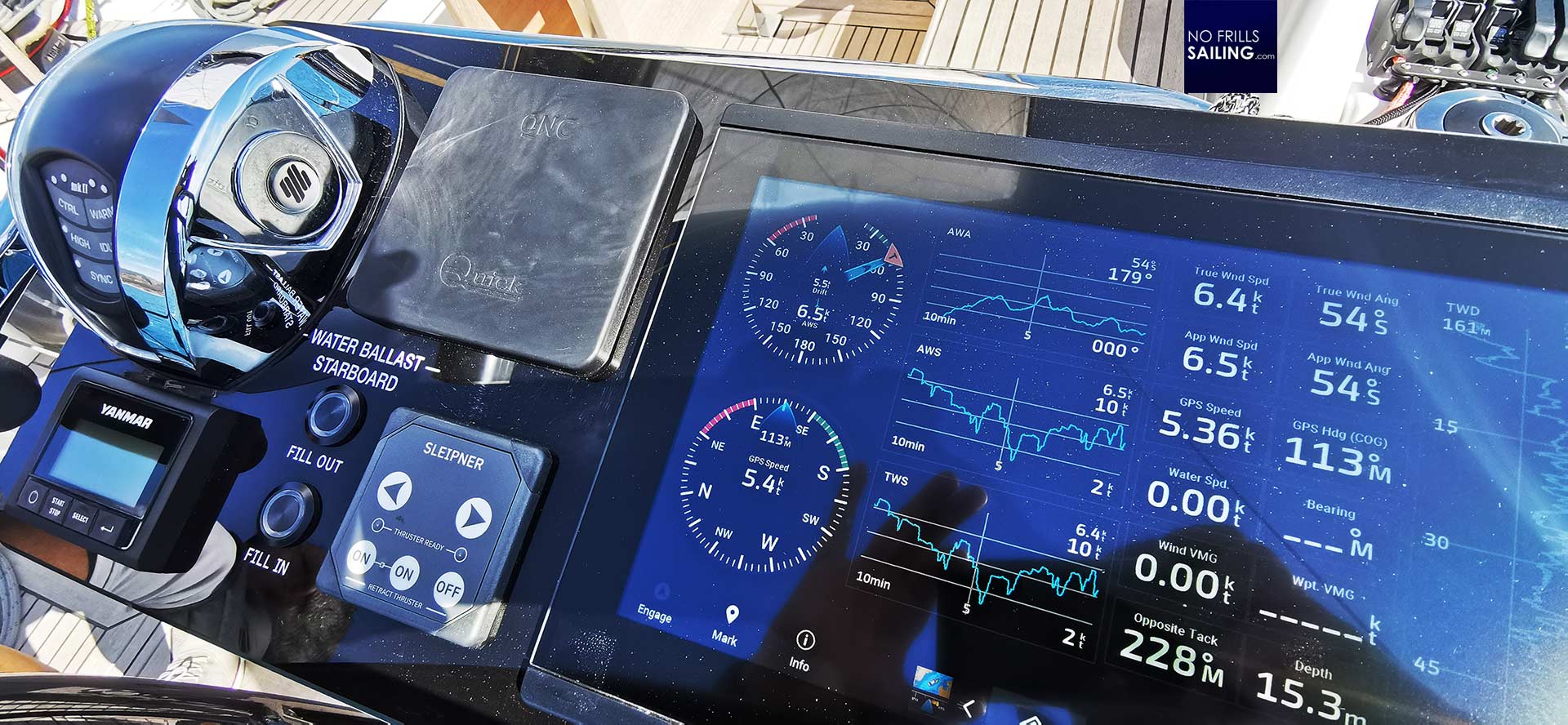
Whilst Paasi and Yves went down to speak about her interiors, I had the boat for myself so I veered the sheets and brought her to an ideal 90 degrees AWA, she increased her speed yet again and was pure fun to sail. Sure, with such low wind and almost no waves as there wasn´t any significant fetch, the excitement was not that high, but I learned to appreciate the First 44´s sailing capabilities.
Push-button-sailing
Sailing the – at least cruising version – First 44 is effortless. If the boat is ordered in full spec, the whole boat can be sailed by just pushing buttons. And I don´t mean the ordinary buttons directly at the winch but those on the helm station controls. You just put on the right rope to the right winch and if rewind winches are ordered, you can sheet in and veer out. Although I wasn´t really impressed with the rewind-speed, this is done much faster by hand.
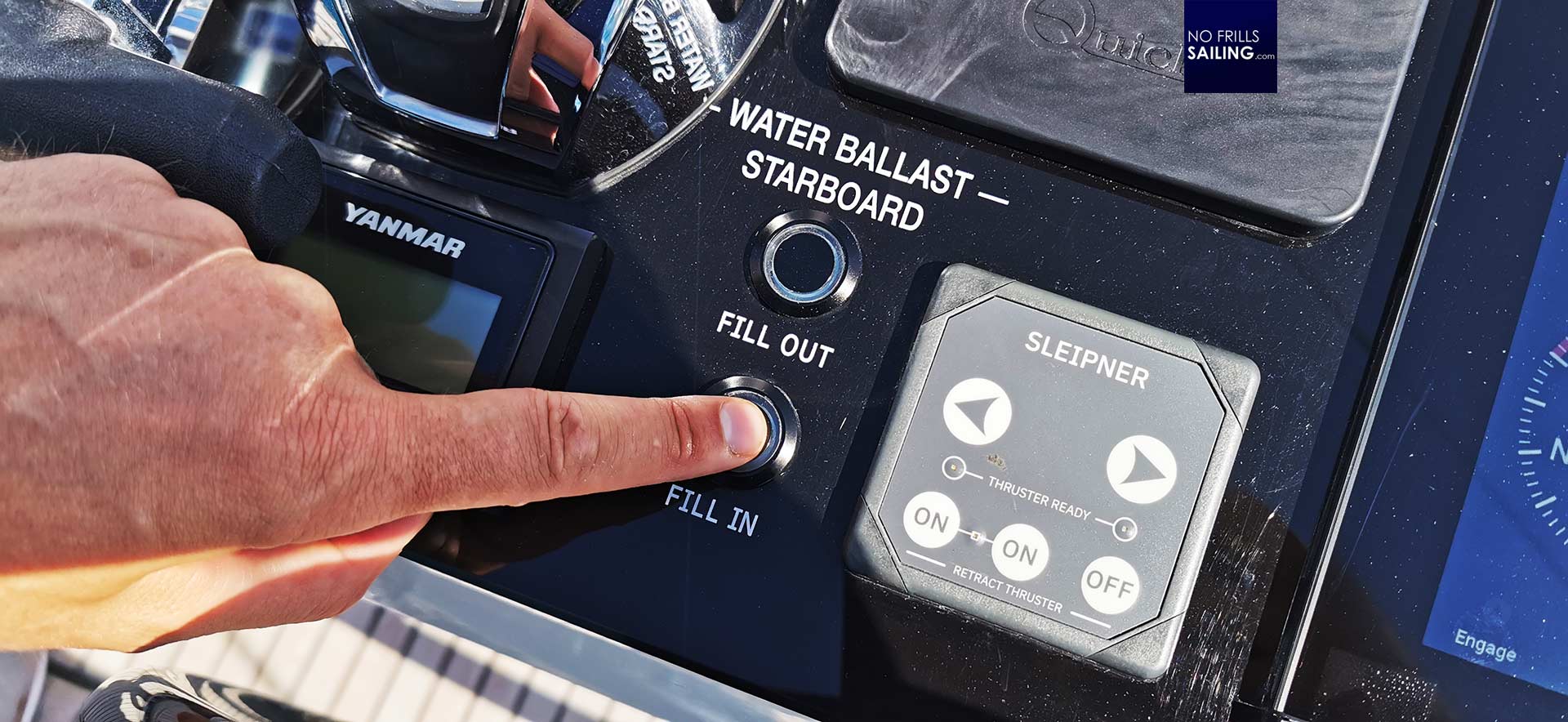
The First 44 can also be equipped with water ballast. This is presumably an option that is most interesting for seriously race-oriented skippers with minimum crew. The tanks will take in 300 liters of sea water each, optimizing pointing abilities and adding counter-weight when sailing strictly upwind. In this, there are as of this date only fragments of data available on the performance version: The mast will be 1.5 meters higher, but no info on the sails area yet (classic mast has 106 sq m, carbon mast has 120 sq. m.), the boat won´t have a windlass, no helm consoles, no HiFi equipment (Hooray!), no cockpit table but more winches, as said, 200 instead of 330 litres of fresh water, lithium batteries instead of AGM (weight saving 110 kg) and a longer bow sprit. I will keep on trying to get aboard a First 44 performance, for sure!
Impressively light-footed on the rudders
Back to our cruising 44. I found her impressively light on the rudders. Even at the end of our sea trial when the wind eased furthermore, I could always steer her very precisely. Of course there is no feel nor any feedback in the carbon wheels but she reacts very promptly and translates steering impulses to immediate reactions.
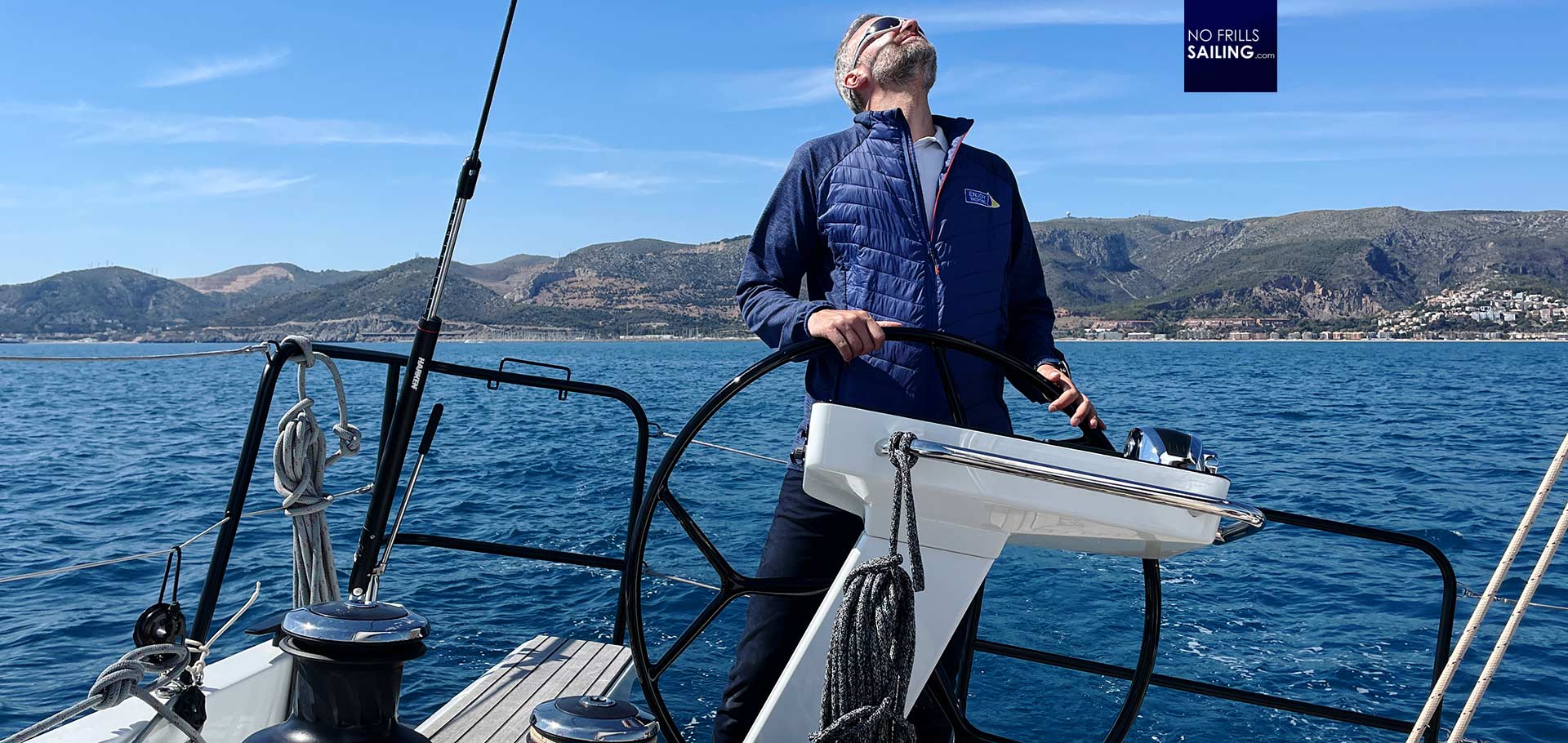
When on hard rudder – even with just 4 knots of boat speeds – her turn rate is surprisingly fast. For a boat that big I found her light-footed and fun to steer. I can imagine the thrills and fun when steering this yacht in a regatta-field fighting for the best position in a starting line or holding one´s ground in a match race.
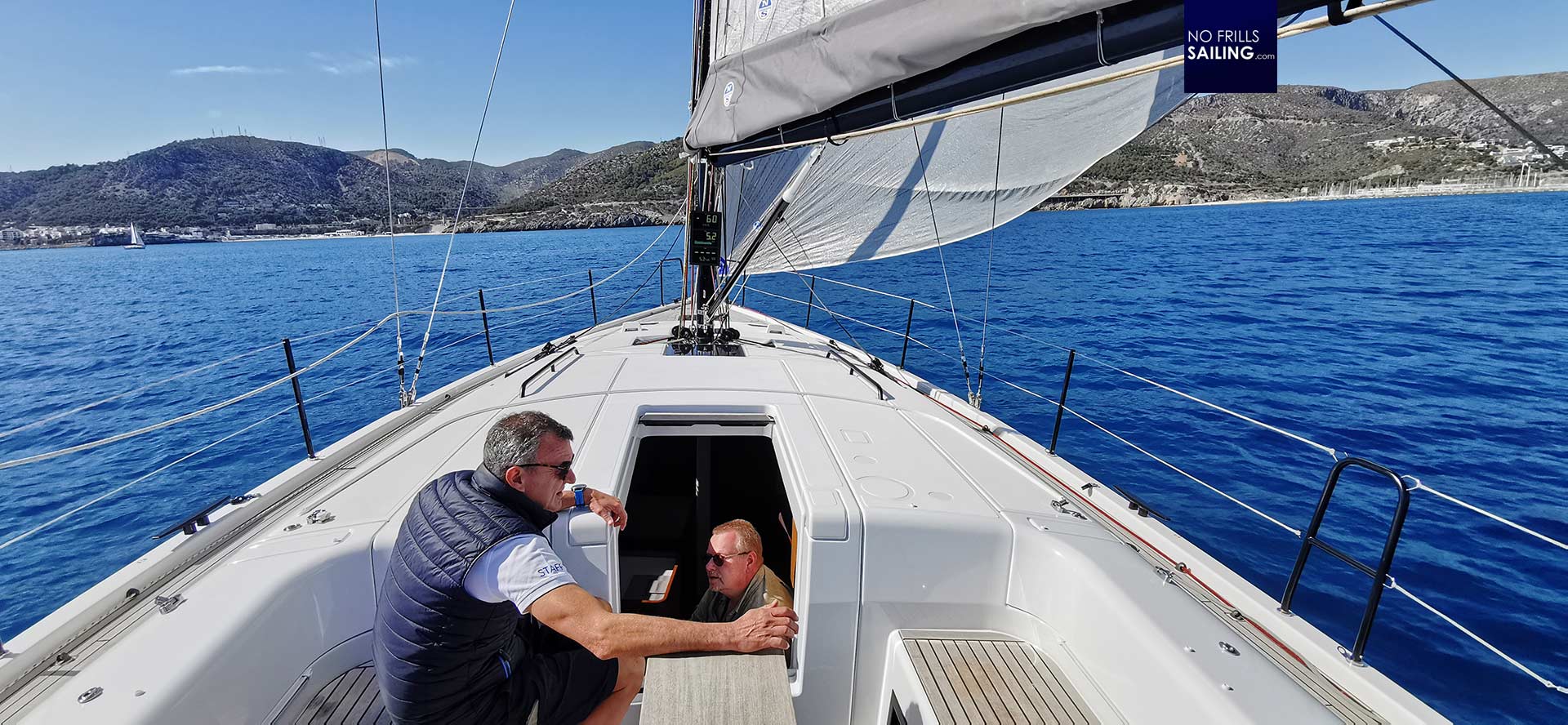
Paasi took many pictures for his Finnish sailing magazine and I hope to one day receive a copy (in English?) of his impressions of the boat. I felt he liked her very much, although as a true descendent of the Vikings he must have had much more cravings for a proper breeze and at least some sailing action.
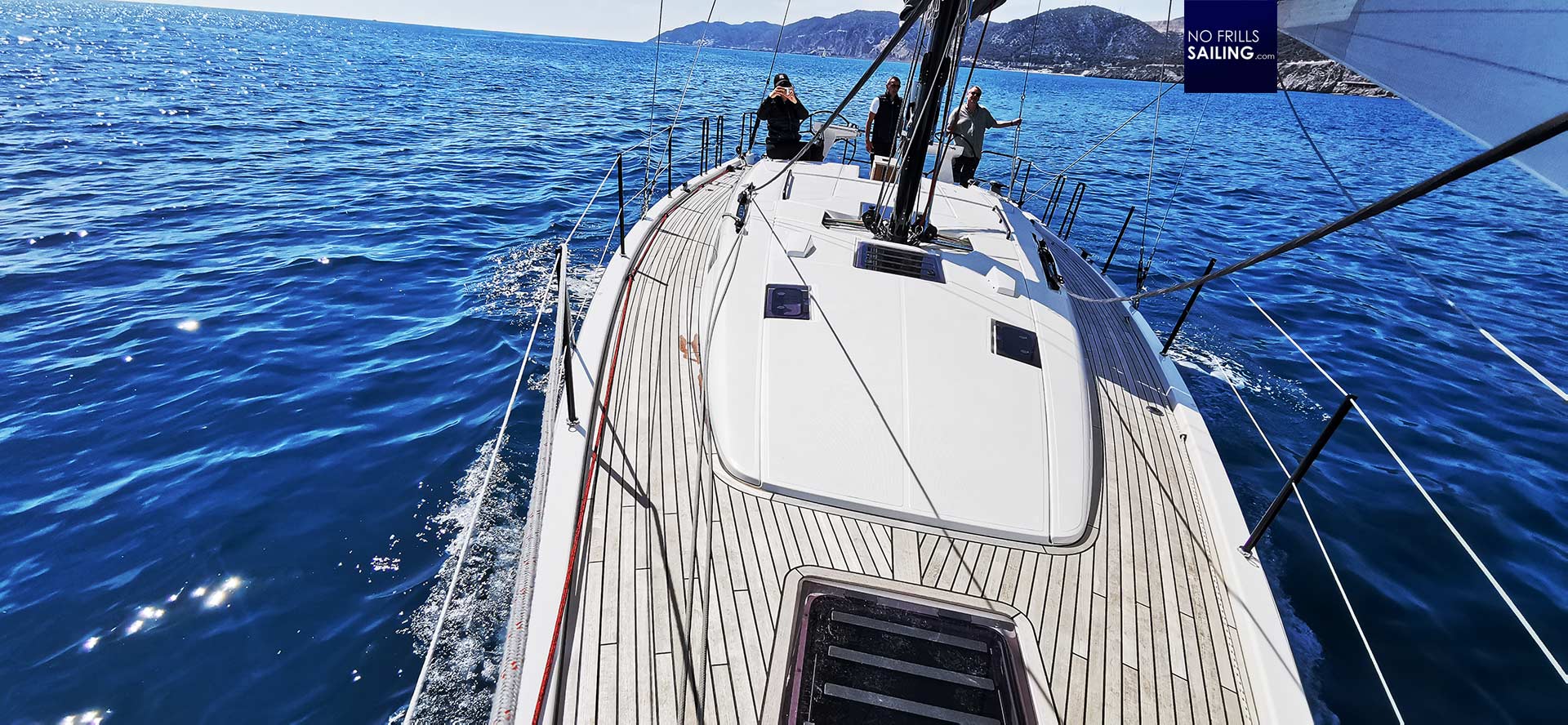
We opened the sheets and went to a near broad reaching course to return to the base as the next couple of guys arrived at the pontoon to get their pre-booked sea trial. 44 feet is a nice size that is big enough to offer a spacious cockpit, nicely sized cabins and socializing areas. Also, the hull is big enough to achieve quick speeds and the platform is stable enough to cope with high seas and offshore weather.
Who is going to go for a First 44?
She is not a Polli-style racer nor a Pogo-style downwind-flyer. I can envision a sailing afficionado who insists of good sailing performance, maybe an occasional Gentlemen´s race of fun regatta but who also has a focus on cruising comforts for his family and friends. The First 44 delivers both of those points and I think she has the potential to combine the best of both worlds. The one who seeks the all-out war on the racetrack, still, Italia Yachts or Grand Soleil might be the better choice, performance-wise surely. But Beneteau offers the First 44 to a price that is super competitive and – I can speak with confidence here – offers the best after-sales and spare parts network and service of the industry.
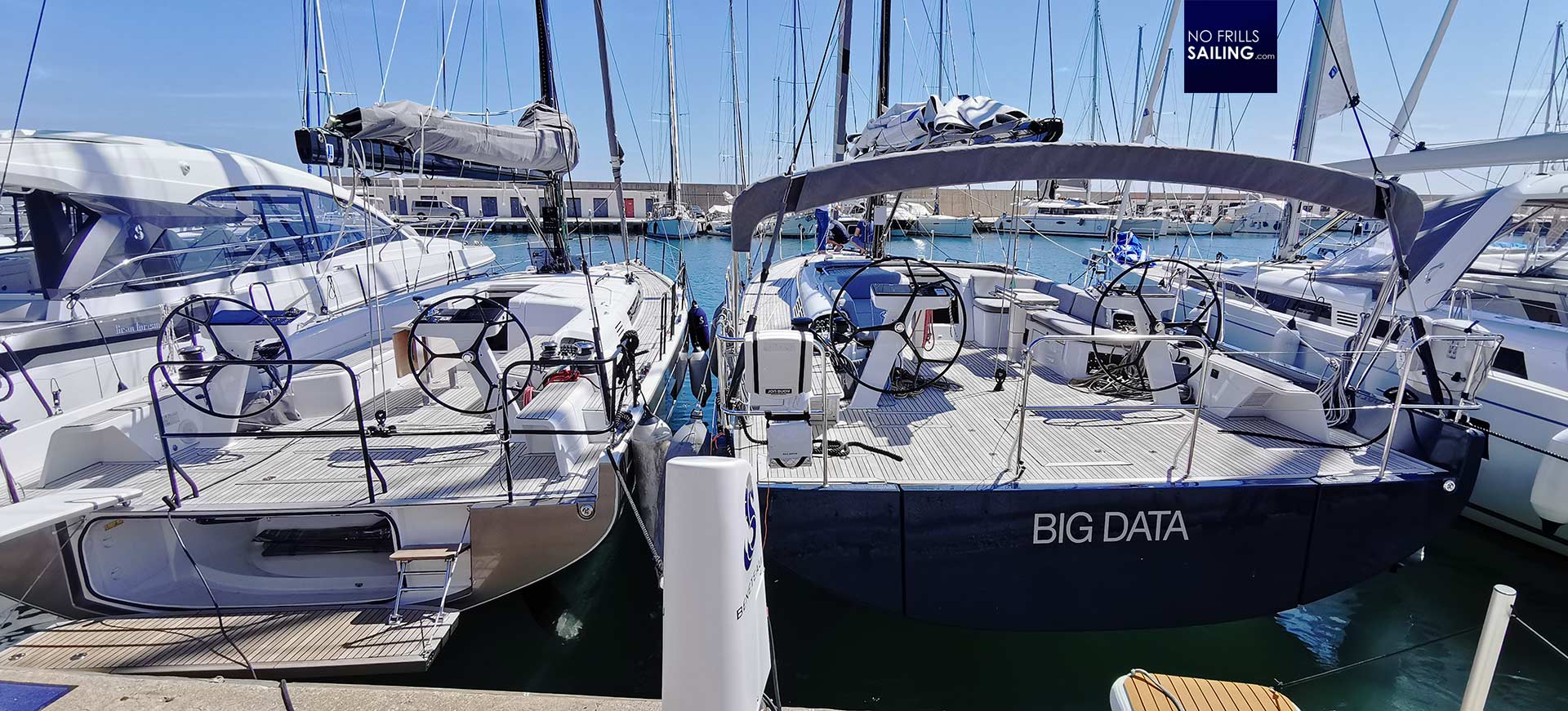
Yves gallantly lands the First 44 at her pontoon right next to her bigger sister, the First 53. It was a wonderfully lush sailing day out but also a salutary one. I´ve learned again that a sailboat needs to be equipped with good sails. I´ve also learned that low wind sailing can show new sides of a boat´s character. Thanks Yves for the great day – and I hope to see the First 44´s biting sister, the performance-version, soon: Preferably with a bit more wind.
Connected articles which may be of interest:
Walkthrough of the First 44 from outside and her interiors
Beneteau´s testbed: First 44e with twin electric drive pods and Torqeedo
About the legend of the First 36.7
